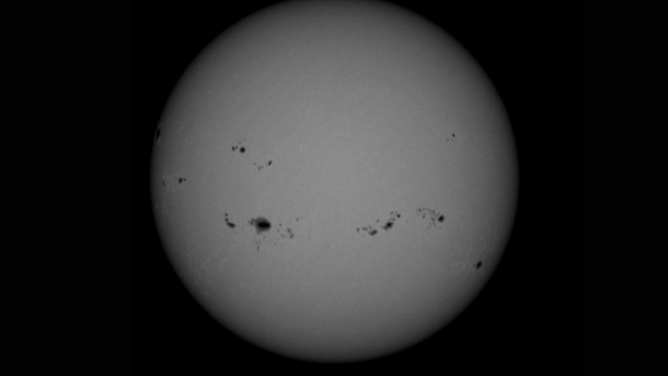Sun likely reaches highest sunspot count in 20 years
Space weather forecasters said the sunspot total is being analyzed by international experts, and the official total will be announced in September.
Northern lights dance above Glasgow, Montana
This National Weather Service video from the Glasgow, Montana office shows the Northern lights on Sunday, Aug. 11, 2024 during a geomagnetic storm.
Space forecasters say the recent Northern Lights seen over the U.S. came just days after the Sun likely had the most sunspots in over 20 years, possibly marking the peak in what is known as Solar Cycle 25.
Sunspots can produce strong solar flares and associated coronal mass ejections (CME). If these eruptions are Earth-directed, NOAA's Space Weather Prediction Center (SWPC) will issue Geomagnetic Storm Watches, like we saw this weekend and Monday when a severe solar storm produced vivid aurora lights as far south as the mid-Atlantic.
"The frequency and severity of solar storms such as flares and coronal mass ejections increases with the sunspot number," according to the SWPC.
STRONGEST SOLAR STORMS IN 20 YEARS CREATES NEW RADIATION BELTS AROUND EARTH
The Sun has been steadily approaching the Solar Maximum, the period in an 11-year cycle when the most sunspots are forecast. It's possible that the peak could have already happened after NOAA's Space Weather Prediction Center counted 337 sunspots on Aug. 8. In July, the SWPC counted nearly 200 sunspots.

A NASA Solar Dynamics Observatory image of the sunspots observed on Aug. 8, 2024.
(NASA)
This number will take some time to confirm through multiple international organizations. Sunspots are visible and can actually be counted through solar telescopes. This is how the first scientists in heliophysics were able to track the Sun's cycles. Some of these sunspot counts vary. The Royal Observatory in Belgium observed 299 sunspots on Aug. 8.
WHAT IS THE 11-YEAR SOLAR CYCLE
The SWPC said if the sunspot count of 337 is correct, the milestone may be the highest sunspot number since at least July 2002.
Space weather forecasters said the sunspot total is being analyzed by international experts, and the official total will be announced in September.
